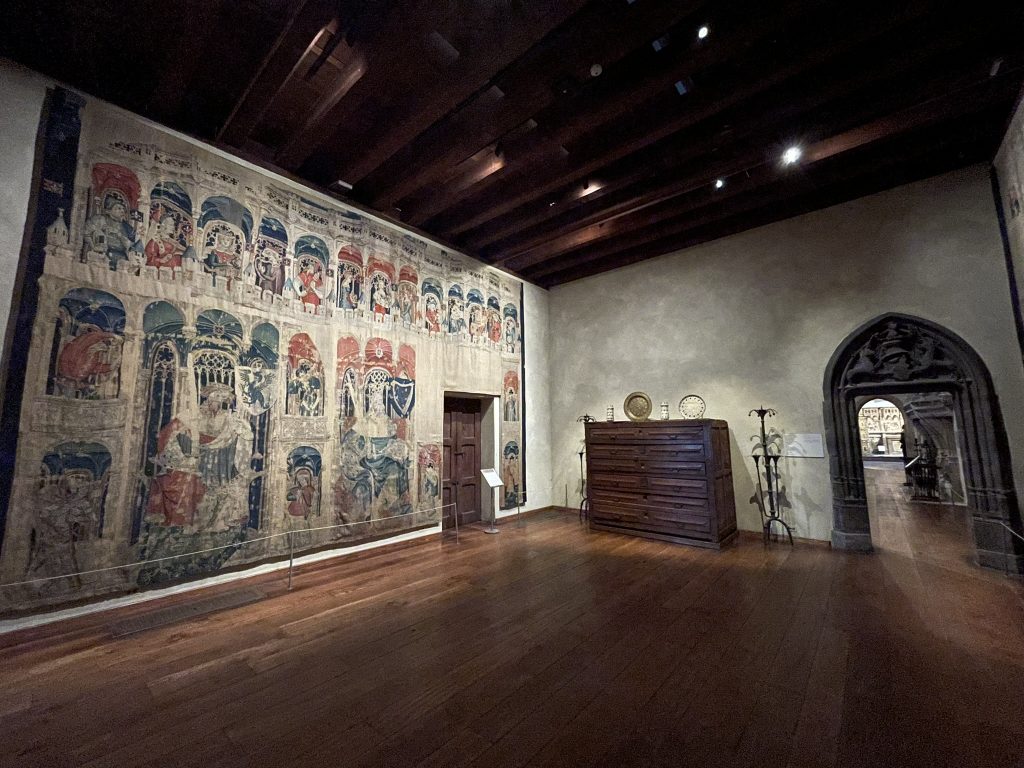I decided to stop into the Met Cloisters almost on a whim, using it to break up a drive. Doug had previously visited the site so it was fair game for a solo foray.
I looked at the website beforehand, and saw that its holdings consist of medieval artworks and artifacts, which are not really my thing, so I was really on the fence about the stop.
However, I was bowled over by what I found, and so glad I went.
The museum was constructed on this site in the Bronx using a “collection” of four French monastery and abbey cloisters that were originally purchased by sculptor and art dealer George Grey Barnard.


Financier and philanthropist John D. Rockefeller Jr. purchased them from Barnard with the intention of creating a museum. They buildings were disassembled and shipped to the U.S., where they were reassembled and incorporated into a new building.
Situated atop a steep hill in Fort Tryron Park (the land donated by Rockefeller and laid out by the Olmsted Brothers firm, naturally), a fortress-like building was constructed around the cloisters. The intent was to evoke “a sense of medieval European monastic life.”

The museum opened in 1938 after five years of construction.
Its initial holdings featured items purchased from Barnard, but it soon grew with donations by Rockefeller, J.P. Morgan, and art dealer Joseph Brummer.

The buildings, cloisters, and gardens are themselves worthy of attention. Inside are many other architectural features that have been turned into art: windows, doors, walls, ceilings and floors.
Many of acquisitions have been incorporated into the structure, evoking the feeling that the building is centuries old and these doors, windows, etc. have always been where they are.
The pictures in this post focus on this architectural aspect of a visit to the Cloisters.


But then there are the objects — more than 5,000 works of European art and items from the 12th through 15th centuries.
Though the subject matter is often religious (and not in a style I personally enjoy), it was hard not to be impressed by the collection of artifacts that have survived for centuries.
Photos related to the treasures on display can be found in this separate post.





















One thought on “The Architecture of the Met Cloisters”